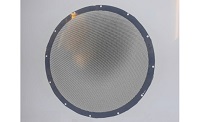An Intelligent Optimization System of Micro Electroforming Process for the Mesh Filter
Keywords:
Taguchi method, BPNN, PSO-GA, micro electroforming, MLPAbstract
This research integrates the Taguchi method, analysis of variables (ANOVA), back-propagation neural networks (BPNN), and hybrid PSO-GA to develop an intelligent optimization system of micro electroforming process for the mesh filter. From the outset of discussions with engineers in terms of past related literature survey of the micro electroforming process, the quality characteristics of product and control variables can be well ascertained, then transforming the problem of multiple quality characteristics into a single quality characteristic via the Taguchi method and ANOVA. However, the optimal parameter settings (solution) through the Taguchi experimental planning is still belong to a discrete optimal solution which is impossible to meet the process stability and quality goals. Therefore, this study first identifies the initial weight of BPNN,using hybrid PSO-GA with multilayer perceptron (MLP),in order to improve training efficiency and precision of BPNN. Furthermore, the study constructs the signal-to-noise (S/N) ratios (BPNNS/N) and quality predictors (BPNNQ) based on hybrid PSO-GA and BPNN with the experimental data. The optimal parameter settings are obtained through a combination of BPNNS/N and BPNNQ with modified PSO-GA. Finally, confirmation experiments are performed to assess the effectiveness of the proposed system. The results show that the proposed system can create the best performance, and the optimal parameters not only enhance the stability in the micro electro forming process but also effectively improve the product quality.
References
[2] S. H. Hong, J. H. Lee, and H. Lee, “Fabrication of 50 nm patterned nickel stamp with hot embossing and electroforming process,” Microelectronic Engineering, vol. 84(5-8), pp. 977-979, 2007.
[3] P. M. Ming, D. Zhu, Y. Y. Hu, and Y. B. Zeng, “Micro-electroforming under periodic vacuum-degassing and temperature-gradient conditions,’ Vacuum, vol. 83(9), pp. 1191-1199, 2009.
[4] S. W. Ryu, S. Choo, H. J. Choi, C. H. Kim, and H. Lee, “Replication of rose petal surfaces using a nickel electroforming process and UV nanoimprint lithography,” Applied Surface Science, vol. 322, pp. 57–63, 2014.
[5] C. W. Park and K. Y. Park, “An effect of dummy cathode on thickness uniformity in electroforming process,” Results in Physics,” vol. 4, pp. 107-112, 2014.
[6] W. Yu and S. Zhou, “The current situation and development trend of electroforming,” Advanced Materials Research, vol. 960-961, pp. 103-108, 2014.
[7] X. Chen, L. Liu, J. He, F. Zuo, and Z. Guo, “Fabrication of a metal micro mold by using pulse micro electroforming,” Micromachines, vol. 9, pp. 13, April 2018.
[8] M. Zhao, L. Du, C. Du, Z. Wei, X. Ji, Z. Bai and X. Liu, “Quantitative study of mass transfer in megasonic micro electroforming based on mass transfer coefficient: Simulation and experimental validation,” Electrochimica Acta, vol. 297(20), pp. 328-333, February 2019.
[9] A. M. Behagh, A. R. F. Tehrani, H. R. S. Jazi, and S. Z. Chavoshi, “Investigation and optimization of pulsed electroforming process parameters for thickness distribution of a revolving nickel part,” Part C: Journal of Mechanical Engineering Science, vol. 227, pp 1-9, 2013.
[10] S. D. Mohanty, R. C. Mohanty, and S. S. Mahapatra, “Study on performance of EDM electrodes produced through rapid tooling route,” Journal of Advanced Manufacturing Systems, vol. 16(4), pp. 357-374, 2017.
[11] B. G. Park, S. G. Kim, and J. S. Ko, “A study on the optimization of electroplating conditions for silicon vias using the Taguchi experimental design method,” International Journal of Precision Engineering and Manufacturing, vol. 20(3), pp. 437-442, March 2019.
[12] L. V. Candioti, M. M. De Zan, M. S. Camara, H. C. Goicoechea, “Experimental design and multiple response optimization using the desirability function in analytical methods development,” Talanta, vol. 124, pp. 123-138, 2014.

Published
How to Cite
Issue
Section
License
Submission of a manuscript implies: that the work described has not been published before that it is not under consideration for publication elsewhere; that if and when the manuscript is accepted for publication. Authors can retain copyright in their articles with no restrictions. is accepted for publication. Authors can retain copyright of their article with no restrictions.
Since Jan. 01, 2019, AITI will publish new articles with Creative Commons Attribution Non-Commercial License, under The Creative Commons Attribution Non-Commercial 4.0 International (CC BY-NC 4.0) License.
The Creative Commons Attribution Non-Commercial (CC-BY-NC) License permits use, distribution and reproduction in any medium, provided the original work is properly cited and is not used for commercial purposes.



